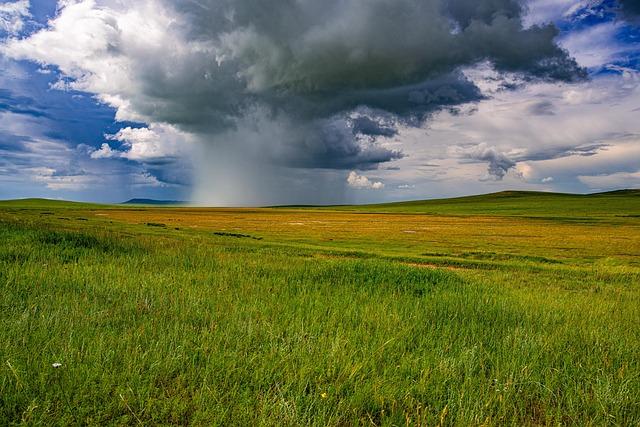In a devastating turn of events, Botswana has been struck by severe flash floods that have claimed the lives of at least seven individuals. As torrential rains continue to drench the region, authorities are grappling with the impacts of this natural disaster and its implications for communities already vulnerable to such weather patterns. The unprecedented rainfall not only poses immediate dangers but also foreshadows a broader climate trend, with forecasts indicating heavy rains across southern Africa in the coming days. This article explores the causes of the floods, the response of local authorities, and the potential ramifications for the wider region as it faces increasing challenges due to climate change and extreme weather conditions.
Botswana’s Tragic Loss: Understanding the Impact of Recent Flash Floods
Botswana has been reeling from the devastating aftermath of recent flash floods that have claimed seven lives and displaced countless families. The intense rainfall, which began earlier this month, overwhelmed riverbanks and inundated urban areas, disrupting normal life and leading to notable infrastructure damage. Many homes have been destroyed or rendered uninhabitable, with entire communities facing the prospect of rebuilding from scratch. Along with the immediate loss of life, the floods have resulted in severe economic ramifications, affecting local businesses and agriculture, which are vital for the livelihood of many citizens.
The government and various humanitarian organizations are mobilizing resources to provide immediate relief to those affected. Efforts include:
- Emergency shelters for displaced families.
- Food and water supplies distributed to impacted communities.
- Medical aid to address health concerns arising from the flooding.
As southern Africa braces for more heavy rains, the risks of further flooding loom large. Authorities are urging residents to remain vigilant, emphasizing the need for disaster preparedness and community resilience in the face of such climatic challenges. in light of these events, understanding the long-term impacts on Botswana’s infrastructure and socio-economic fabric is critical for developing effective recovery strategies.

Analysis of Meteorological Patterns: Causes Behind Southern Africa’s Heavy Rains
Recent meteorological patterns have unveiled significant shifts in weather dynamics across Southern Africa, leading to the unprecedented heavy rains that resulted in devastating flash floods in Botswana. A combination of factors, including the influence of La Niña, a shift in regional atmospheric pressure, and the seasonal transition from winter to summer, have all contributed to this climatic anomaly. La Niña conditions often cultivate cooler ocean temperatures, which can lead to increased precipitation in the region. This phenomenon, coupled with the intertropical convergence zone (ITCZ) shifting southward during this time of year, amplifies the chances of intense rainfall events.
Moreover, the topography of Southern Africa plays a crucial role in determining local weather patterns. When moist air is forced upwards over mountain ranges, it cools and condenses, resulting in heavy downpours. Several towns have already reported rainfall amounts exceeding 100mm in just a few hours, enhancing the likelihood of flash flooding. The ongoing climate change has also intensified these patterns, making such extreme weather events increasingly common. To understand these trends better, below is a table summarizing the potential impacts of these meteorological causes:
| Factor | Impact |
|---|---|
| La Niña | Increased precipitation, cooler temperatures |
| ITCZ Movement | Enhanced rainfall likelihood |
| topography | Localized heavy downpours due to air uplift |
| Climate Change | More frequent extreme weather events |

response and Recovery Efforts: How Botswana is Tackling the aftermath of Flooding
Botswana has mobilized an extensive emergency response to address the catastrophic aftermath of recent flash floods that claimed seven lives.Authorities are prioritizing search and rescue operations to ensure that all affected citizens are accounted for. Rescue teams, comprised of both government personnel and local volunteers, are actively working in the hardest-hit regions to reach stranded individuals and provide medical assistance. The Ministry of Nationality, Immigration and Gender Affairs has commenced efforts to establish temporary shelters, equipped with essential supplies such as food, clean water, and medical care for those displaced by the deluge.
In light of anticipated heavy rains across southern Africa, the government is concurrently strategizing on long-term recovery efforts. These initiatives include:
- Restoration of infrastructure, especially roads and bridges severely damaged by flooding.
- Assessment and enhancement of drainage systems to mitigate future flood risks.
- Community education programs focusing on disaster preparedness and resilient farming practices.
To effectively implement these plans,Botswana has convened an emergency response task force composed of various stakeholders,including local governments,non-governmental organizations,and international aid agencies,to collaborate on a comprehensive recovery strategy.

Community Preparedness: Recommendations for Future Flood Resilience in Botswana
In light of the tragic events caused by recent flash floods in Botswana, it is crucial for communities to adopt a proactive approach towards flood resilience. To enhance readiness for future inundations, stakeholders should consider the following recommendations:
- Community Education and Awareness: Implement educational programs that inform residents about flood risks, emergency procedures, and safe evacuation routes.
- Infrastructure Improvement: Invest in the advancement of robust drainage systems and flood barriers in vulnerable areas.
- Regular Emergency Drills: Conduct simulations and drills to prepare local populations for potential flooding scenarios.
- Partnership with Local Organizations: Collaborate with NGOs and community groups to share resources and expertise on flood management.
- Development of Early Warning Systems: Enhance technology for monitoring weather conditions and provide timely alerts to residents.
To further support these efforts, a coordinated approach involving government bodies, local communities, and international partners is essential. A structured framework could involve:
| Action Plan | Timeline | Obligation |
|---|---|---|
| Community Awareness Campaigns | Ongoing | Local Authorities |
| infrastructure Assessments | 6 Months | Government Agencies |
| early Warning System implementation | 1 Year | National Meteorological Services |
By embracing these strategies, Botswana can build a more resilient and prepared community that stands ready to face the challenges posed by future flooding events, ultimately safeguarding lives and property.

Regional Implications: The Wider Effects of southern Africa’s Rainfall Trends
The recent flash floods in Botswana, resulting in seven fatalities, starkly highlight the unpredictable and often dangerous weather patterns affecting southern Africa. As heavy rains continue to threaten various regions, the ramifications extend beyond immediate local tragedies. The erratic rainfall trends, primarily linked to climate change, are reshaping regional agriculture, water supply, and disaster preparedness strategies across several nations. Local farmers,already vulnerable to shifts in weather,are now grappling with the challenge of crop failures and food insecurity,which exacerbate poverty levels and create a ripple effect throughout the economy.
Moreover, the implications of such rainfall extremes are not confined to Botswana; they resonate across borders. Countries such as South Africa, Zimbabwe, and Namibia are experiencing similar weather phenomena, leading to systemic pressure on infrastructure and health services. The following factors exemplify the regional impact of these rainfall variations:
- Increased Flooding Risks: Urban centers are particularly vulnerable, prompting emergency response reviews.
- Economic Disruption: Agricultural output declines can lead to market volatility, affecting trade within the region.
- Water Security Issues: Variability in rainfall threatens local water supplies, leading to conflicts over resources.
in light of these challenges,regional cooperation and investment in climate resilience strategies are crucial. Collaborative approaches might include sharing meteorological data, enhancing early warning systems, and implementing best practices in disaster management. The continued unpredictability of weather patterns serves as a reminder of the interconnected nature of southern africa’s ecological and economic systems, necessitating a unified effort to mitigate impacts and safeguard communities.

Government and NGO Roles: Collaborating for Effective Disaster Management Strategies
In the wake of the devastating flash floods in Botswana, the collaborative efforts between government bodies and non-governmental organizations (NGOs) have never been more crucial. These partnerships are essential for not only immediate response and recovery but also for developing long-term disaster management strategies. Government agencies are tasked with implementing policies and allocating resources,while NGOs bring on-the-ground expertise,community trust,and innovative solutions to tackle the challenges posed by natural disasters. Their collaboration can significantly enhance the resilience of affected communities by ensuring that relief measures are well-coordinated and culturally sensitive.
A multi-faceted approach to disaster management can lead to effective outcomes, including the establishment of early warning systems, community training programs, and resource mobilization during crises.Examples of collaborative efforts may include:
- joint Training Sessions: Both government officials and NGO representatives can partake in workshops to share knowledge and improve emergency response skills.
- Resource Sharing: ngos can provide logistical support, while the government offers infrastructure solutions for rapid response.
- Community Engagement: Involving local communities in planning and execution enhances trust and efficiency in disaster response efforts.
Insights and Conclusions
As the region grapples with the devastating impact of the recent flash floods in Botswana that have tragically claimed seven lives, the threat of additional heavy rains looms over southern Africa. Authorities are urging residents to remain vigilant and prepared for further adverse weather conditions as meteorological forecasts predict ongoing rainfall.The humanitarian ramifications of these weather events underscore the urgency for robust disaster response strategies and community resilience initiatives. As Botswana and its neighboring countries confront the challenges posed by climate-related hazards, collaborative efforts will be essential in mitigating the risks and safeguarding vulnerable populations. Ongoing coverage and updates will be critical as the situation develops, highlighting both the immediate needs of those affected and the broader implications for regional climate patterns.







